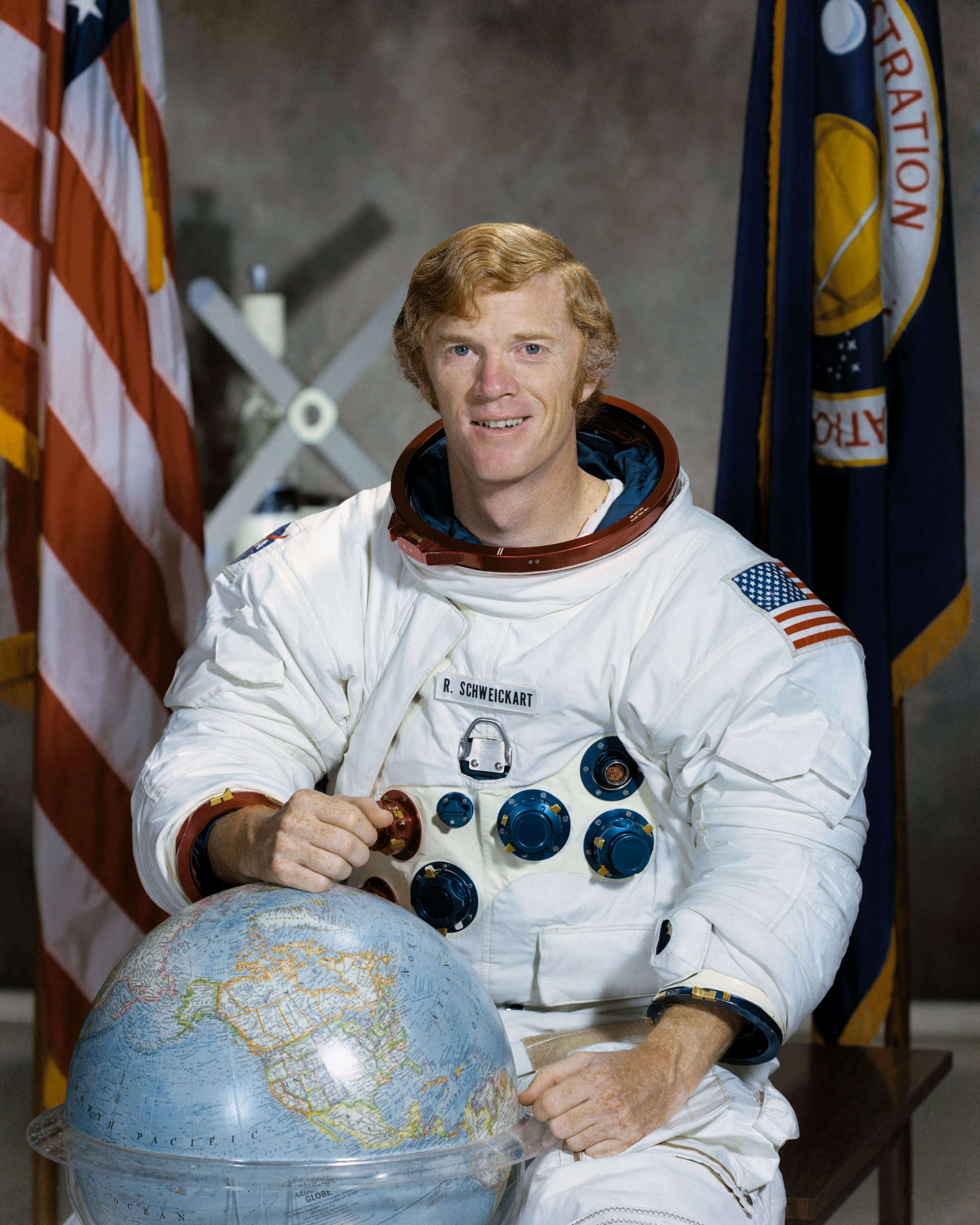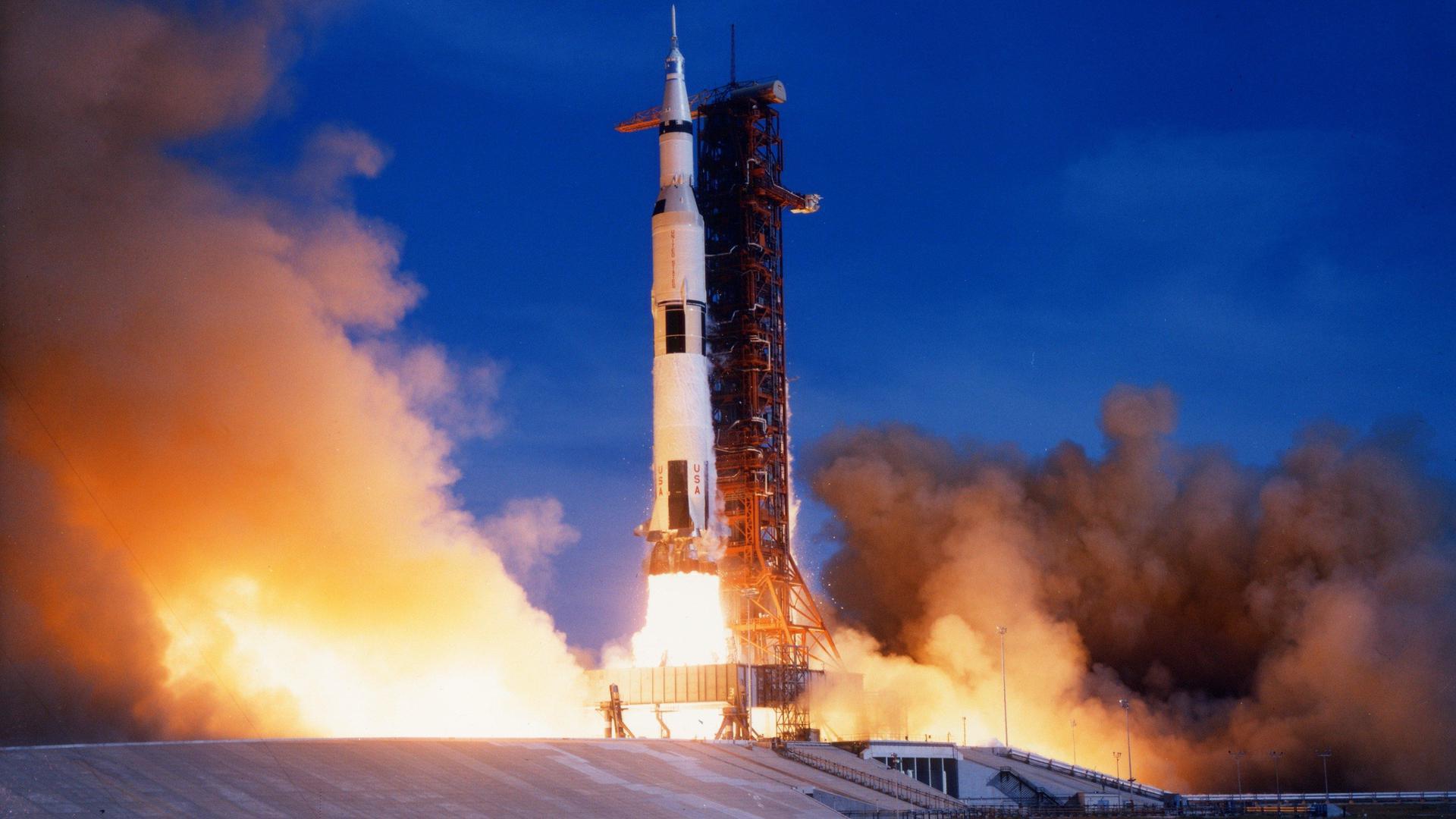Rusty Schweickart
American - (NASA)
Retired
Date of Birth: Oct. 25, 1935
Age: 90
Russell Louis "Rusty" Schweickart is an American aeronautical engineer, and a former NASA astronaut, research scientist, U.S. Air Force fighter pilot, as well as a former business executive and government executive. Selected in 1963 for NASA's third astronaut group, he is best known as the Lunar Module Pilot on the 1969 Apollo 9 mission, the first manned flight test of the Lunar Module, on which he performed the first in-space test of the Portable Life Support System used by the Apollo astronauts who walked on the Moon. As backup Commander of the first manned Skylab mission in 1973, he was responsible for developing the hardware and procedures used by the first crew to perform critical in-flight repairs of the Skylab station. After Skylab, he served for a time as Director of User Affairs in NASA's Office of Applications. Schweickart left NASA in 1977 to serve for two years as California Governor Jerry Brown's assistant for science and technology, then was appointed by Brown to California's Energy Commission for five and a half years, serving as chairman for three. In 1984–85 he co-founded the Association of Space Explorers and later in 2002 co-founded the B612 Foundation, a non-profit organization dedicated to defending Earth from asteroid impacts, along with fellow former astronaut Ed Lu and two planetary scientists. He served for a period as its chair before becoming its chair emeritus.
Saturn V | Apollo 9
National Aeronautics and Space Administration | United States of AmericaKennedy Space Center, FL, USA
March 3, 1969, 4 p.m.
The National Aeronautics and Space Administration is an independent agency of the executive branch of the United States federal government responsible for the civilian space program, as well as aeronautics and aerospace research. NASA have many launch facilities but most are inactive. The most commonly used pad will be LC-39B at Kennedy Space Center in Florida.
Electron
Don't Be Such A Square (STP-S30)
Rocket Lab Launch Complex 2 (Launch Area 0 C) - Wallops Flight Facility, Virginia, USASTP-S30 is a complex mission that will deliver research experiments and technology demonstrations to orbit for the DoD and contribute to future space…
Falcon 9
Starlink Group 15-13
Space Launch Complex 4E - Vandenberg SFB, CA, USAA batch of 27 satellites for the Starlink mega-constellation - SpaceX's project for space-based Internet communication system.
Falcon 9
Starlink Group 6-99
Launch Complex 39A - Kennedy Space Center, FL, USAA batch of 29 satellites for the Starlink mega-constellation - SpaceX's project for space-based Internet communication system.
Ariane 62
Galileo L14 (FOC FM33 & FM34)
Ariane Launch Area 4 - Guiana Space Centre, French GuianaPayload consists of two satellites for Europe's Galileo navigation system.
Atlas V 551
Amazon Leo (LA-04)
Space Launch Complex 41 - Cape Canaveral SFS, FL, USAAmazon Leo, formerly known as Project Kuiper, is a mega constellation of satellites in Low Earth Orbit that will offer broadband internet access, thi…



